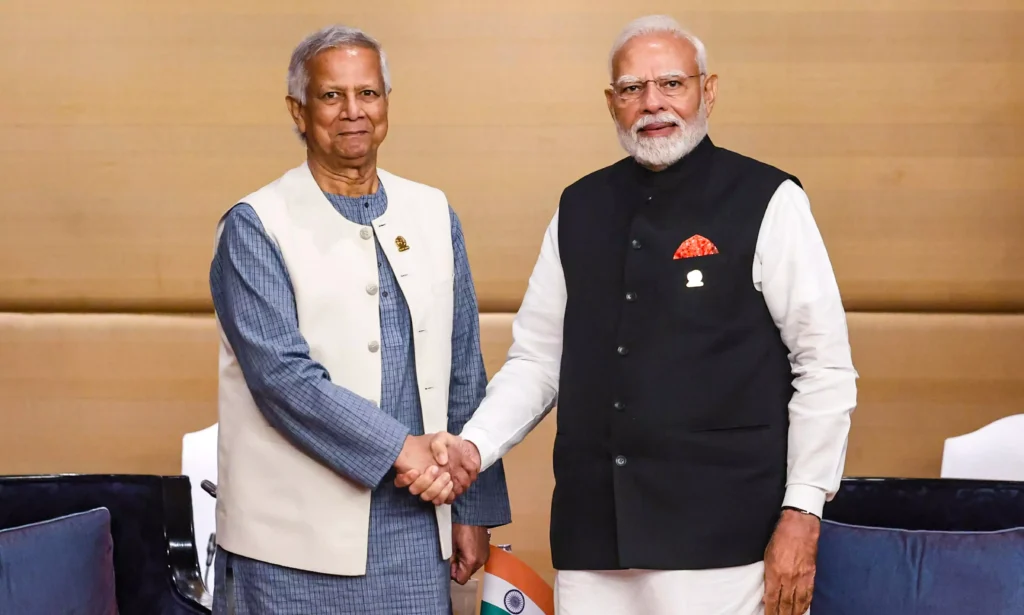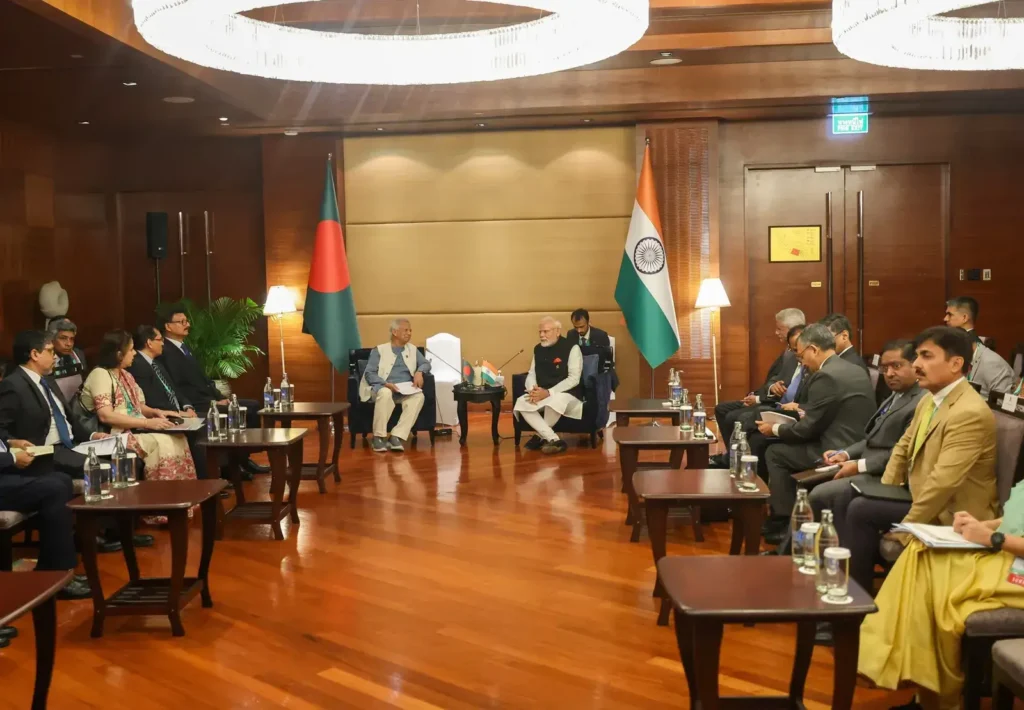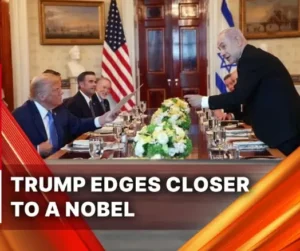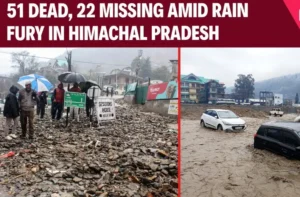On April 4, 2025, a notable diplomatic exchange took place in Bangkok, Thailand, as Indian Prime Minister Narendra Modi sat down with Bangladesh’s Chief Adviser Muhammad Yunus. This meeting, occurring during the 6th BIMSTEC Summit, was their first since Yunus stepped into power after the ouster of former Bangladeshi leader Sheikh Hasina in August 2024. With relations between the two nations recently tested, this encounter has sparked hope for a possible thaw in tensions.

The significance of this moment lies not just in the handshake but in the timing. Held on the side-lines of a regional summit focused on cooperation, the meeting offered both leaders a chance to address recent friction and explore a path forward. For India and Bangladesh, neighbors with a shared history and border, finding common ground is vital—especially now.
A Symbolic Gesture Amid Past Friction
The backdrop to this meeting wasn’t entirely smooth. Not long ago, Yunus stirred controversy by describing India’s northeastern states as “landlocked” during a trip to China, suggesting Bangladesh could be their key to the sea. Indian officials quickly pushed back, pointing to the country’s long coastline and ongoing efforts to boost connectivity in the Northeast. The remarks had fueled unease, but in Bangkok, a different tone emerged. Yunus handed Modi a photograph from 2015, recalling a moment when Modi awarded him a gold medal at the Indian Science Congress—a subtle reminder of warmer days.
India’s Foreign Secretary later noted that Modi expressed support for a peaceful and democratic Bangladesh, stressing the importance of a positive relationship. He also encouraged both sides to steer clear of words that might deepen the divide, hinting at a willingness to move beyond recent spats.
India-Bangladesh Relations: Navigating a Rough Patch
Ties between the two countries have been rocky since Hasina’s exit. A close partner of India, she sought refuge in New Delhi after a student-led movement forced her out, a decision that irked Bangladesh’s interim government. Meanwhile, reports of unrest targeting Hindu minorities in Bangladesh and Yunus’s early visit to China—before engaging India—have added layers of complexity. These developments have left many wondering about the future of this once-strong partnership.

Yet, there’s precedent for reconciliation. Just weeks earlier, Modi had written to Yunus on Bangladesh’s National Day, calling for a relationship built on mutual respect. The Bangkok meeting seems to echo that sentiment, offering a chance to reset the tone.
BIMSTEC Summit: Setting a Regional Stage
The BIMSTEC Summit provided more than just a venue—it framed the discussion within a broader push for regional unity. Modi unveiled a 21-point plan to strengthen ties among Bay of Bengal nations, proposing ideas like a BIMSTEC Chamber of Commerce and trade in local currencies. With Bangladesh soon taking the group’s chairmanship, this meeting could lay the groundwork for deeper collaboration, even as bilateral challenges linger.
Profsssor Muhammad Yunus is presenting a photo to Prime Minister Narendra Modi during their bilateral meeting in Bangkok on Friday. The photo is about Prime Minister Narendra Modi presenting a gold medal to Professor Yunus at the 102nd Indian Science Congress on January 3, 2015 pic.twitter.com/lsikvMOWT4
— Chief Adviser of the Government of Bangladesh (@ChiefAdviserGoB) April 4, 2025
What Lies Ahead?
While the meeting marks a promising start, hurdles remain. From differing views on regional dynamics to domestic pressures, both leaders face a delicate balancing act. Still, their willingness to engage suggests a shared interest in stabilizing India-Bangladesh relations. As the dust settles from this Bangkok dialogue, the coming months will reveal whether this step forward can bridge the gaps of the past.







